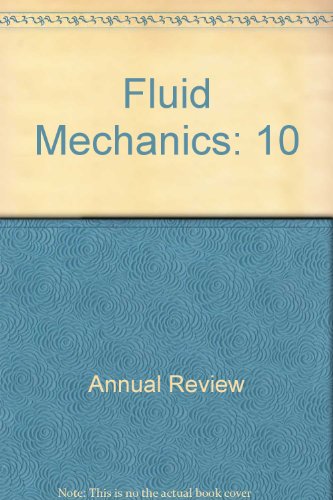Gas-Liquid Foam Dynamics: From Structural Elements to Continuum Descriptions
IF 30.2
1区 工程技术
Q1 MECHANICS
引用次数: 6
Abstract
Gas-liquid foams are important in applications ranging from oil recovery and mineral flotation to food science and microfluidics. Beyond their practical use, they represent an intriguing prototype of a soft material with a complex, viscoelastic rheological response. Crucially, foams allow detailed access to fluid-dynamical processes on the mesoscale of bubbles underlying the large-scale material behavior. This review emphasizes the importance of the geometry and interaction of mesoscale structural elements for the description of the dynamics of entire foams. Using examples including bulk flow of foam under steady shear, interfacial instabilities, and foam fracture through bubble rupture, this article highlights the wide variety of available theoretical descriptions, ranging from network modeling approaches coupling structural element equations of motion to full continuum models with elastoviscoplastic constitutive relations. Foams offer the opportunity to develop rigorous links between such disparate descriptions, providing a blueprint for physical modeling of dynamical multiscale systems with complex structure. Expected final online publication date for the Annual Review of Fluid Mechanics, Volume 55 is January 2023. Please see http://www.annualreviews.org/page/journal/pubdates for revised estimates.气液泡沫动力学:从结构元素到连续体描述
气液泡沫在从石油开采、矿物浮选到食品科学和微流体的应用中都很重要。除了实际应用之外,它们还代表了一种具有复杂粘弹性流变响应的软材料的有趣原型。至关重要的是,泡沫允许详细了解大规模材料行为背后气泡的中尺度流体动力学过程。这篇综述强调了中尺度结构元素的几何形状和相互作用对描述整个泡沫动力学的重要性。本文以稳定剪切下泡沫的整体流动、界面不稳定性和泡沫破裂为例,重点介绍了各种可用的理论描述,从耦合结构单元运动方程的网络建模方法到具有弹粘塑性本构关系的全连续体模型。泡沫提供了在这些不同的描述之间建立严格联系的机会,为具有复杂结构的动态多尺度系统的物理建模提供了蓝图。《流体力学年度评论》第55卷预计最终在线出版日期为2023年1月。请参阅http://www.annualreviews.org/page/journal/pubdates用于修订估算。
本文章由计算机程序翻译,如有差异,请以英文原文为准。
求助全文
约1分钟内获得全文
求助全文
来源期刊
CiteScore
54.00
自引率
0.40%
发文量
43
期刊介绍:
The Annual Review of Fluid Mechanics is a longstanding publication dating back to 1969 that explores noteworthy advancements in the field of fluid mechanics. Its comprehensive coverage includes various topics such as the historical and foundational aspects of fluid mechanics, non-newtonian fluids and rheology, both incompressible and compressible fluids, plasma flow, flow stability, multi-phase flows, heat and species transport, fluid flow control, combustion, turbulence, shock waves, and explosions.
Recently, an important development has occurred for this journal. It has transitioned from a gated access model to an open access platform through Annual Reviews' innovative Subscribe to Open program. Consequently, all articles published in the current volume are now freely accessible to the public under a Creative Commons Attribution (CC BY) license.
This new approach not only ensures broader dissemination of research in fluid mechanics but also fosters a more inclusive and collaborative scientific community.

 求助内容:
求助内容: 应助结果提醒方式:
应助结果提醒方式:


